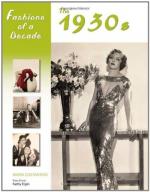|
This section contains 188 words (approx. 1 page at 300 words per page) |

|
Industrial wage earners became increasingly militant during the 1930s. Both unions and capitalists frequently resorted to violence. Republic Steel was said to have purchased more tear gas than any other institution, and a Senate report noted that 282 companies had spent almost $10 million for ammunition, spies, and replacement workers from 1933 to 1937. Ten thousand garment workers, including many women, went on strike in New York in 1935. The previous year thousands of workers walked out of textile mills from Massachusetts to Georgia (and elsewhere) in the largest strike in the nation's history to that time. That same year, in Minneapolis, four men died as a result of violent struggles between striking truck drivers and deputized businessmen. Minnesota governor Floyd B. Olson, who had been elected on the Farmer-Labor ticket in 1932, sympathized with the strikers, who were actively supported by the Farmers' Holiday Association, a group...
|
This section contains 188 words (approx. 1 page at 300 words per page) |

|




